Today, RY brought a bunch of us to Pulau Ubin to help us familise with the variety of local mangrove species that we have.
Near the jetty, I spotted this pretty Blue Nawab butterfly, Polyura schreiber tisamenus. which had just emerged from its chrysalis. A mangrove butterfly, its caterpillar is known to feed on Bruguiera spp. and Rhizophora spp., but apparently it feeds on the sea hibiscus too.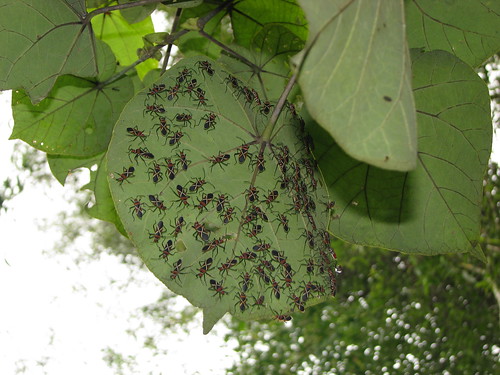
Today was also a good day for seeing the cotton stainer bugs, Dysdercus decussatus which hides in swarms under leaves. They feed on the seeds of the sea hibiscus, Hibiscus tiliaceus.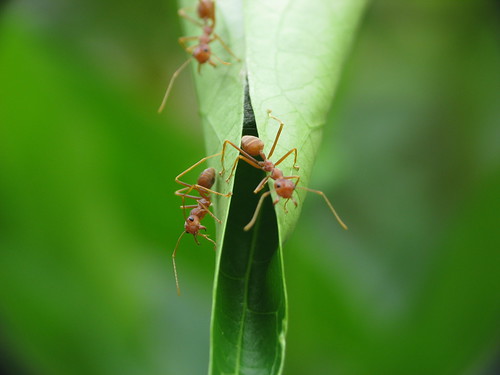
Weaver ants, Oecophylla smaragdina, are also a common insect in the mangroves, especially on the Noni plant, Morinda citrifolia. They are notorious for their painful bite with an injection of acid to the wound.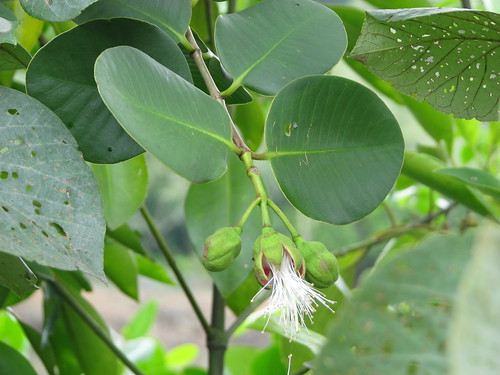
An uncommon local species, Sonneratia ovata, it can be differentiate from S. alba (below) from its more circular leaves and distinct veins.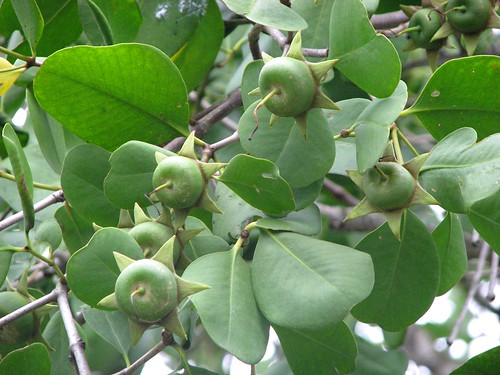
Theres are the the fruits of Sonnertia alba, very rounded and wrapped by a calyx with lobes that bend backwards.
The propagules of Bruguiera cylindrica, like S. alba, has calyx lobes that are bend slightly backwards.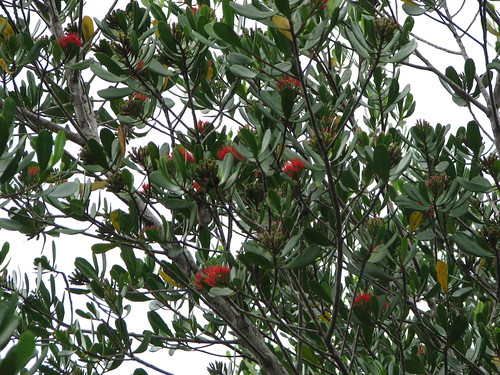
Here is Lumnitzera littorea with its bright red flowers,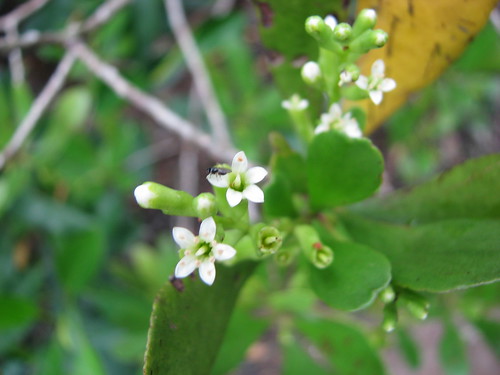
and L. racemosa.
Kacang Kacang, Aegiceras corniculatum means beans in Malay due to its bean like fruits.
A stick insect, but where are its six legs as all insects should have? The front and back pairs of legs are actually extended forward and backwards, possibly to make it resemble more like a branch.
This is Ceriops zippeliana, identifiable from the propagules which have a red collar and patterned calyx.
One of the two highlights of the day. This is not the typical cotton stainer bug, but Dysdercus simon which have a black head instead, feeds on the seeds of the Portia tree, Thespesia populnea. In the Singapore Red Data book, it is classified as endangered and known only one locality between Kranji and Sungei Buloh. This is something worthy to celebrate about seeing it in Pulau Ubin too! 
Walking almost the entire day lost, we were finally rewarded with this Bruguiera hainesii spotted by RY! The malay name, Berus Mata Buaya, meaning crocodile eyes, refer to the large lenticels on the bark, which I unfortunately do not have a picture of.
A tiring but great day spent at Ubin. Thanks RY :)
Saturday, December 6, 2008
Mangroves in Pulau Ubin
Subscribe to:
Post Comments (Atom)

4 comments:
hainesii!!! grrrr...
haha, who ask u to go back early ;p
All plants in this blog correctly identified!
Excellent!
really like the stick insect so cute!
Didi
Post a Comment